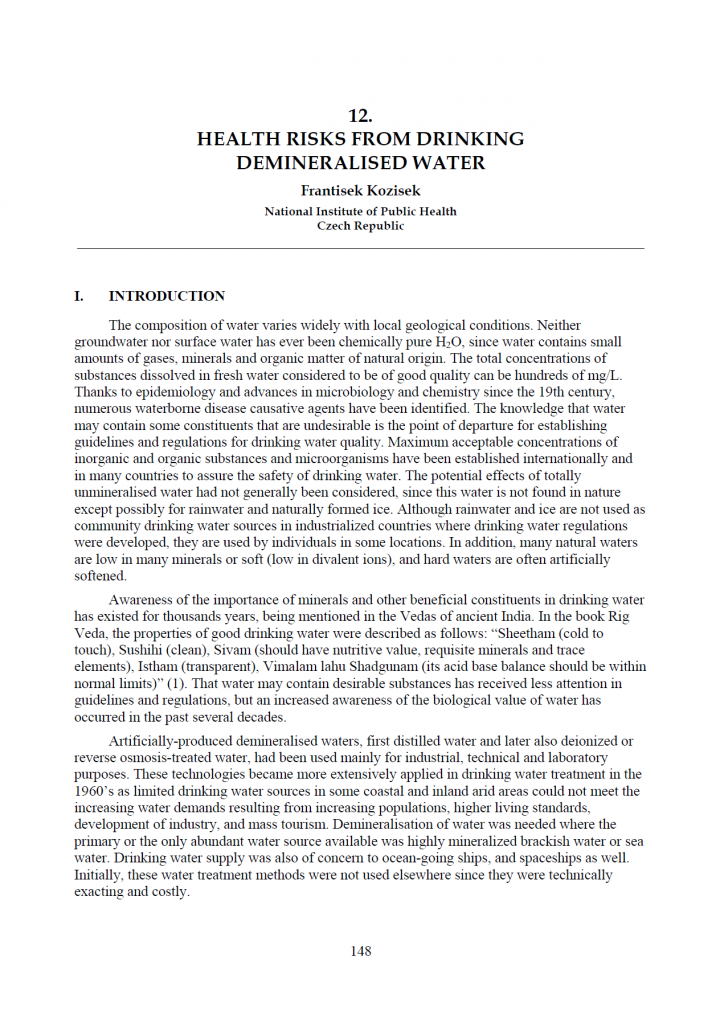
Published in: 2004
Pages: 16
Publisher:
National Institute of Public Health
Author:
Kozisek, F.
Uploaded by:
SuSanA Admin
Partner profile:
common upload
1030 Views
28 Downloads
The composition of water varies widely with local geological conditions. Neither groundwater nor surface water has ever been chemically pure H2O, since water contains small amounts of gases, minerals and organic matter of natural origin. The total concentrations of substances dissolved in fresh water considered to be of good quality can be hundreds of mg/L.
Thanks to epidemiology and advances in microbiology and chemistry since the 19th century, numerous waterborne disease causative agents have been identified. The knowledge that water may contain some constituents that are undesirable is the point of departure for establishing guidelines and regulations for drinking water quality. Maximum acceptable concentrations of inorganic and organic substances and microorganisms have been established internationally and in many countries to assure the safety of drinking water. The potential effects of totally unmineralised water had not generally been considered, since this water is not found in nature except possibly for rainwater and naturally formed ice. Although rainwater and ice are not used as community drinking water sources in industrialized countries where drinking water regulations were developed, they are used by individuals in some locations. In addition, many natural waters are low in many minerals or soft (low in divalent ions), and hard waters are often artificially softened.
Bibliographic information
Kozisek, F. (2004). Health Risks from Drinking Demineralised Water. National Institute of Public Health
Filter tags
English














